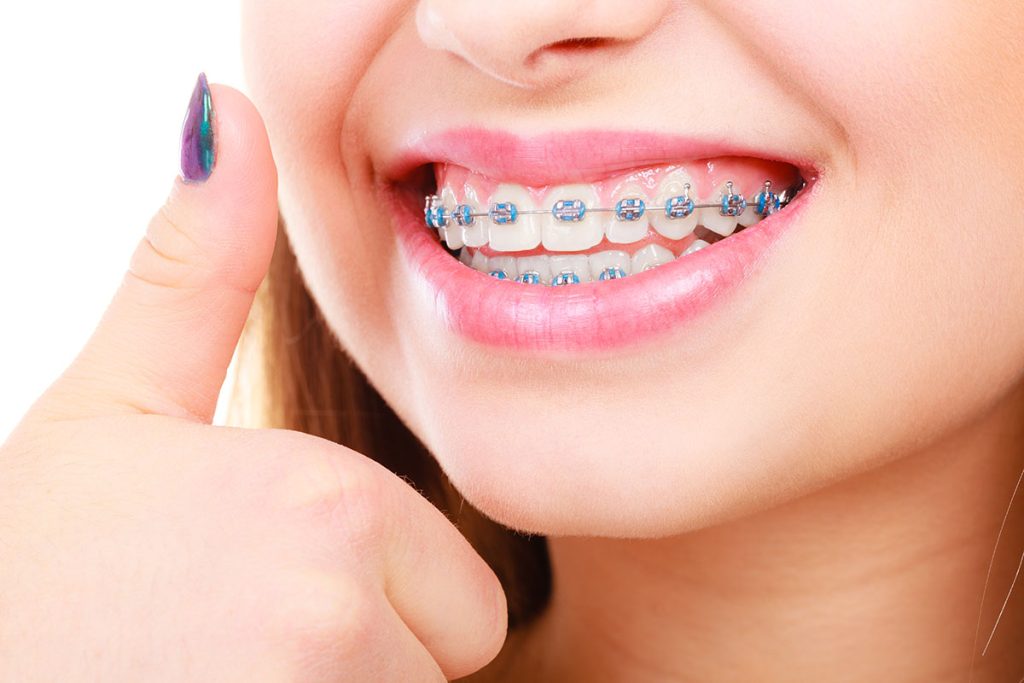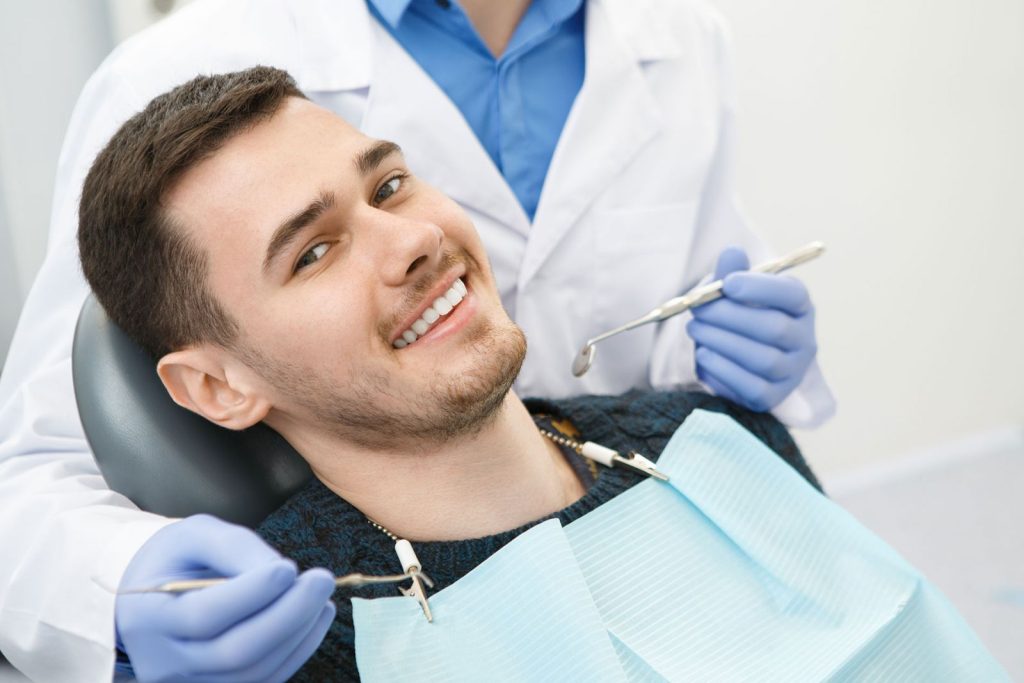Orthodontics Department
Orthodontics is a specialized branch of dentistry focused on the diagnosis, prevention, and treatment of improper positioning of the teeth and jaws. The most critical step in orthodontic treatment is accurate diagnosis. Therefore, our department utilizes both traditional methods—such as intraoral and extraoral photography, two-dimensional radiographs, and impressions—and advanced technologies including stereophotogrammetry, cone-beam computed tomography (CBCT), and intraoral scanners for three-dimensional evaluation of soft and hard tissues.
Tooth alignment can be corrected at any age. Brackets are typically placed on the front surfaces of the teeth, but advanced techniques allow for lingual placement (on the back surfaces). Brackets may be made of stainless steel (gray) or porcelain (white). Increasingly popular clear aligner therapy offers a removable, nearly invisible alternative to traditional braces—without wires or brackets.
Skeletal discrepancies in jaw position can be treated during childhood using orthopedic appliances. We recommend scheduling an orthodontic consultation as soon as the first permanent molars erupt (around age 7). If skeletal problems are not addressed early, treatment may later require both orthodontic alignment and orthognathic surgery performed by a plastic surgeon. In our department, all treatment options are discussed in detail with patients to determine the most suitable approach.

When to Start Orthodontic Treatment
Your child’s first orthodontic evaluation should occur no later than age 7. Even if the teeth appear aligned, hidden bite problems may exist. Warning signs include:
Asymmetrical facial or jaw structure
Mouth breathing
Difficulty chewing, speaking, or closing the mouth properly
Harmful habits (thumb sucking, nail biting, cheek/lip biting)
Protruding or retruded jaws
Forward-positioned teeth
Lack of contact or abnormal bite between upper and lower teeth
Early or delayed loss of baby teeth
Crowded, misaligned, or unerupted teeth
Appliances placed behind the teeth can discreetly correct misalignment. These are suitable for adults and school-aged children with aesthetic concerns.
Patients who prefer not to wear braces may opt for custom-made clear aligners, which should be worn consistently except during meals.
If a problem is detected at this age, your orthodontist will guide you on the optimal time to begin treatment. Early intervention may eliminate the issue entirely or simplify future treatment.
Tooth alignment can be corrected at any age. Brackets are typically placed on the front surfaces of the teeth, but advanced techniques allow for lingual placement (on the back surfaces). Brackets may be made of stainless steel (gray) or porcelain (white). Increasingly popular clear aligner therapy offers a removable, nearly invisible alternative to traditional braces—without wires or brackets.
Skeletal discrepancies in jaw position can be treated during childhood using orthopedic appliances. We recommend scheduling an orthodontic consultation as soon as the first permanent molars erupt (around age 7). If skeletal problems are not addressed early, treatment may later require both orthodontic alignment and orthognathic surgery performed by a plastic surgeon. In our department, all treatment options are discussed in detail with patients to determine the most suitable approach.

Oral Care During Orthodontic Treatment
The following precautions help prevent cavities and protect orthodontic appliances:
Brush teeth after every meal as instructed by your orthodontist
Clean between teeth daily using interdental brushes and floss
Visit your dentist regularly for cavity and gum checks
Attend all scheduled orthodontic appointments
Wear appliances exactly as prescribed
Avoid sticky foods (e.g., candy, gum, caramel) that may damage appliances
Minimize hard foods (e.g., nuts, carrots, crusty bread); eat in small bites and avoid biting with front teeth
Remove pits from fruits before eating
Adjustment to appliances typically takes 7–10 days. Some discomfort or soft tissue irritation may occur. Follow your orthodontist’s guidance and contact them if symptoms persist.
Always receive orthodontic treatment from a certified orthodontic specialist.
Cleft Lip and Palate – Family Guide
What causes cleft lip and palate?
The lip and palate naturally begin as separate structures in the womb. Between the 6th and 10th weeks of pregnancy, they normally fuse. Failure to fuse results in cleft lip and/or palate. These conditions may be detected during routine prenatal ultrasounds. While the exact cause is often unknown, contributing factors may include medications, radiation, stress, trauma, viral infections, vitamin imbalances, or genetic predisposition. Cleft lip and palate occur in approximately 1 in 700–1000 births.
Which specialists are involved in treatment?
Treatment involves a multidisciplinary team: Plastic surgeon, pediatrician, nutritionist, orthodontist, ENT specialist, pediatric dentist, speech therapist, psychologist, and anesthesiologist. These professionals follow the child from infancy through adulthood.
When are surgeries performed?
Babies typically undergo 2–3 surgeries in infancy. Lip repair is usually performed between 3–4 months, and palate repair before the child turns 1 year old.
What should you do after birth?
A baby born with a cleft should be evaluated by a plastic surgeon as soon as possible. If needed, a feeding appliance or nasal-palatine shaping device may be prescribed by the orthodontist within the first 1–2 weeks. If feeding issues arise, a nutritionist should be consulted. Hearing should be assessed by an ENT specialist.

Orthodontic Treatment for Cleft Lip and Palate
Two types of appliances may be used:
Feeding Appliance
Designed for babies with wide palatal clefts who have difficulty feeding. It is worn only during feeding and removed afterward for cleaning and storage. Note: Not all babies require a feeding appliance. Those with small clefts may feed without it and do not need orthodontic intervention. These babies are monitored annually by the orthodontist and plastic surgeon.
Shaping Appliance
Used for babies with cleft lip and palate who require nasal and palatal shaping. It is prescribed only if the baby is in good general health (no breathing or heart issues) and approved by both the plastic surgeon and orthodontist.

First Orthodontic Appointment – What to Bring
Parents must bring a medical clearance report from the pediatrician confirming the baby’s general health. During the visit:
The baby is examined and records are taken
Oral and nasal impressions are made with the help of an anesthesiologist and parent
Appliance fabrication takes approximately 2–3 hours
While waiting, families are kindly asked to bring necessary items such as bottles, breast milk, formula, diapers, and other baby essentials.
The appliance is fitted, and families receive training on usage and feeding. A follow-up appointment is scheduled for the following week.
Unless otherwise advised by the orthodontist, babies using shaping appliances should return for weekly check-ups until their first surgery.
Due to clinic volume, families may experience wait times during weekly visits. We kindly ask that all baby care items be brought to each appointment.








